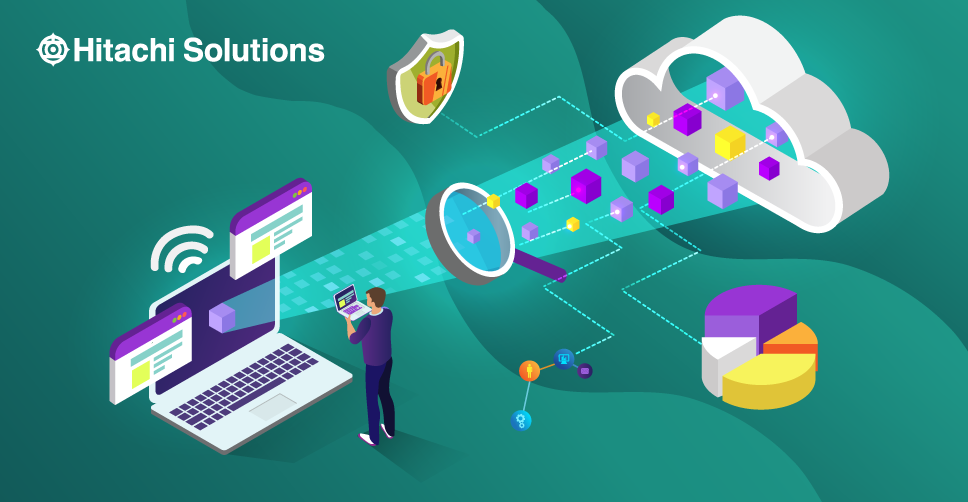

Proactive D365 F&O Monitoring and Alerting
4-6 Weeks │ Price Starting at $1.5K/month* USD * plus one-time setup fees
Download the OfferOnce regarded as a niche technology, cloud computing has come a long way since its debut in the 1960s. In fact, for many businesses, the cloud has become a way of life: 94% of enterprises report using cloud computing technology; an additional 84% claim to have a multi-cloud strategy that consists of a combination of public and private cloud.

With the rise of cloud computing has come the need for cloud monitoring — that is, the continuous monitoring and management of cloud-based IT assets, architecture, and infrastructure to ensure optimal availability and maximum security. There are numerous cloud marketing solutions and services on the market today, as well as a variety of techniques — both manual and automated — to support cloud performance. In this blog post, we’ll explore some of those cloud monitoring tools and techniques, as well as offer some tips to help you get started.
Types of Cloud Monitoring
The cloud is not a singular entity but rather a collection of different components, each of which plays an integral role in ensuring optimal performance and availability. In order for cloud technology to function as intended, these components must work together as a cohesive unit — if any one of them were to experience an unexpected service interruption, it could lead to disruption and downtime across the entire cloud. That’s why it’s necessary to implement multiple different types of cloud monitoring within your cloud ecosystem, including:
- Website monitoring: This refers to the process by which technicians monitor traffic, availability, resource utilization, and other key performance metrics across cloud-hosted websites to ensure optimal uptime and functionality.
- Database monitoring: This technique requires technicians to monitor database queries, access requests, data integrity, availability, and the consumption of cloud database resources. This is especially important because the vast majority of cloud applications depend on databases, meaning even a brief period of downtime can take systems completely offline. Proactive database monitoring tools, such as uptime detectors, can go a long way toward ensuring a high level of responsiveness and that issues with database stability are expediently resolved.
- Virtual machine monitoring: This refers to the process by which technicians monitor virtual machines (VMs), which are themselves software computers that provide the same functionality as physical computers, and other virtualized infrastructure. Technicians track the users, traffic, and status of each VM to ensure that it is running at peak operating levels.
- Virtual network monitoring: For cloud network monitoring, technicians keep a watchful eye on the connectivity and operational health of the network components to ensure that virtual networks aren’t overwhelmed with traffic and that vital connections don’t go offline. This type of cloud monitoring is often performed by a network operations center.
- Cloud storage monitoring: The process by which technicians monitor storage resources and processes provisioned to VMs, services, databases, and applications. Many organizations will use cloud monitoring solutions to automatically track performance metrics, processes, users, databases, and available storage and use advanced analytics to derive insights from the data they generate.
Note that cloud monitoring should take place across all cloud-based services, including software as a service (e.g. Office 365), platform as a service (e.g. Azure Monitor), infrastructure as a service (e.g. Azure Compute), function as a service (e.g. Azure Functions), and application hosting.
10 Benefits to Using a Cloud Monitoring Solution
Cloud resources can be monitored in a variety of ways; for example, you can use an on-premises application or even a system that is, itself, hosted in the cloud. Both have their advantages, though most organizations choose to use cloud-hosted solutions to monitor public cloud resources.
There are numerous benefits to investing in and implementing a cloud performance monitoring system, including:
- Cloud monitoring tools proactively identify and resolve any problems that could prevent your organization from delivering vital services to your customers, including cybersecurity threats, functionality issues, and slow performance.
- Most cloud monitoring tools come pre-configured, which makes them easy to install.
- Cloud monitoring solutions that are hosted in the cloud don’t require an on-premises footprint, which means you don’t need to invest as many resources into updating and maintaining your monitoring environment.
- Since these solutions are cloud based, they’re far easier to scale across organizations of all sizes and are capable of growing along with your business.
- Service providers take full responsibility for maintaining dedicated cloud monitoring tools and hardware, saving you valuable time and providing you with peace of mind.
- Cloud monitoring solutions are automatically updated on a regular basis, so you don’t need to plan out and schedule updates.
- Thanks to their up-to-the-minute reporting, cloud monitoring solutions make it easy to monitor speed metrics and other KPIs in real time. Best of all, these solutions are compatible with multiple devices, including desktop computers, laptops, tablets, and smartphones, so you can monitor system and application performance from anywhere in the world.
- Cloud monitoring tools use APIs to communicate with your environment, which allows for seamless, agentless interactions — all you need is authentication credentials.
- Cloud monitoring solutions are virtually disaster-proof because all monitoring resources are stored in the cloud rather than in your organization’s servers and workstations. This prevents your cloud performance monitoring system from experiencing service interruptions when local problems arise.
- Because cloud monitoring solutions are virtually disaster-proof, your monitoring environment will experience fewer errors and less downtime, resulting in a better overall customer experience.
Public & Hybrid Cloud Monitoring
Most cloud monitoring solutions are designed specifically to handle private cloud performance monitoring rather than public or hybrid cloud monitoring, simply by virtue of the fact that public and hybrid cloud monitoring present more obstacles than private cloud monitoring.
The primary benefit of public cloud computing is that the cloud provider is responsible for everything, from management to governance to security. Although this frees up valuable resources, it also means that organizations have significantly less visibility into the infrastructure supporting their applications than they would with a private cloud. Without a holistic view, it can be challenging — if not impossible — for organizations to get the end-to-end monitoring insights they need.
For many organizations, this is cause for concern. According to a recent survey, less than 20% of companies reported that they’re able to properly monitor public environments, and 87% expressed fear that their lack of public cloud visibility hides security threats.

This challenge extends to hybrid cloud monitoring. Hybrid cloud environments combine public and private clouds, enabling them to seamlessly share data and applications. Although there any many benefits to this structure, hybrid cloud environments come with many of the same visibility-related concerns as public clouds, as well as unique challenges of their own. Hybrid cloud environments tend to be complex, consist of multiple different components, pull data from multiple different sources, and are highly distributed and dynamic.
That said, it isn’t impossible to use cloud monitoring tools to observe and analyze public and hybrid cloud environments — in fact, many solutions are designed for exactly that purpose. You just need to know what to look for. The right solution will enable you to custom blend private and public cloud monitoring to support a hybrid cloud or multi-cloud infrastructure, enabling your IT team to optimize applications and systems for business.
Cloud Monitoring Best Practices
There are a few best practices you can implement to ensure that your cloud monitoring solution operates as intended, and that you achieve optimal cloud uptime and performance:
- Identify key performance indicators (KPIs) and other metrics that affect your business’s bottom line and the overall user experience. When it comes to cloud environments, there’s a lot to monitor, but not everything warrants close attention. Designating which KPIs and metrics you want to track prior to implementing a cloud monitoring tool will give you a clear sense of what to prioritize.
- Group underlying components into their applications and map them to relevant business services. Given that cloud environments are highly complex, it’s critical to understand the relationships between individual resources and build that information into the monitoring system. This allows for a more comprehensive understanding of how an issue within one component might affect the broader application and, more importantly, business and end users.
- Keep a close eye on cloud service usage and fees. The beauty of cloud computing is that it’s highly scalable; that said, increased usage can result in higher costs, so make sure your cloud monitoring solution is tracking usage activity and associated costs.
- Establish good baselines. Different applications have different base activity levels. It’s important that you know what constitutes as normal for each so that your cloud monitoring solution automatically adds or subtracts servers to maintain peak performance levels in the event that an app exceeds or falls below its baseline.
- Consolidate all data within a single, centralized platform. It’s important that all of your cloud monitoring data— including data pulled from multiple different sources — live in one place so it’s easily accessible and consistent, and so that you have a holistic view of cloud performance.
Why Hitachi Solutions?
Hitachi Solutions Managed Services is here to meet all of your cloud performance monitoring needs, from database monitoring to cloud storage monitoring and everything in between. Using our centralized platform and easy to use portals and dashboards, you can:
- Visualize highly granular data and custom metrics in real time.
- Proactively prevent outages by reporting on metric forecasts.
- View all activity across your environment at a glance from a single pane of glass.
- Drill into individual hosts with just the click of a button.
- Monitor customer containers as quickly as they’re created or eliminated.
- Set up alerts for anomalies and outliers that account for daily, weekly, and seasonal fluctuations.
- Seamlessly navigate between logs, infrastructure metrics, and application traces, all within one platform.
- Discover underutilized cloud servers and on-premises servers with our real-time, auto-generated host map.
- Create custom drag-and-drop dashboards within seconds using our built-in widget.
- View anomalous behavior across all customer environment systems and applications.
- Diagnose and resolve performance issues with greater speed and efficiency.
Our cloud monitoring solution is supported by a dedicated team of technical experts, there to offer you round-the-clock professional guidance and assistance.
Are you ready to take your cloud performance to the next level? Contact Hitachi Solutions today.
Video: Taking Monitoring to the Cloud
Learn the top 5 monitoring tips for organizations moving to Azure.https://play.vidyard.com/dxU7AVifjmbjSdSL4mXXSj.html?


